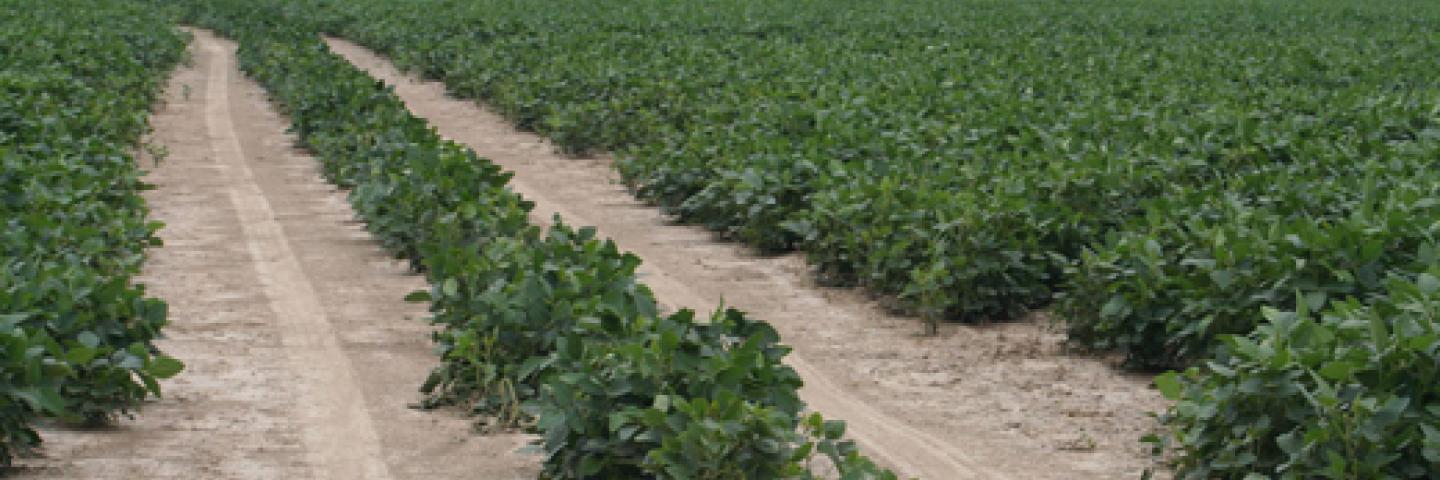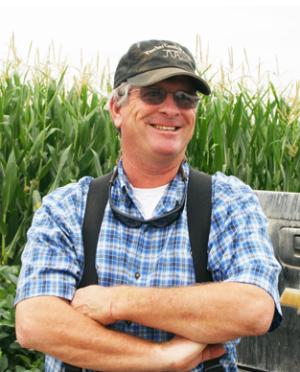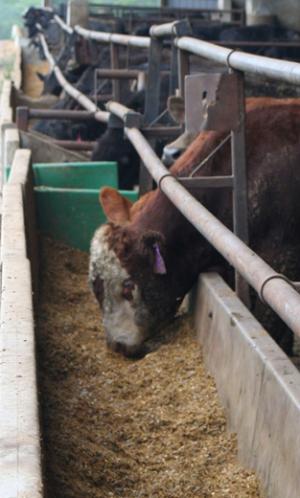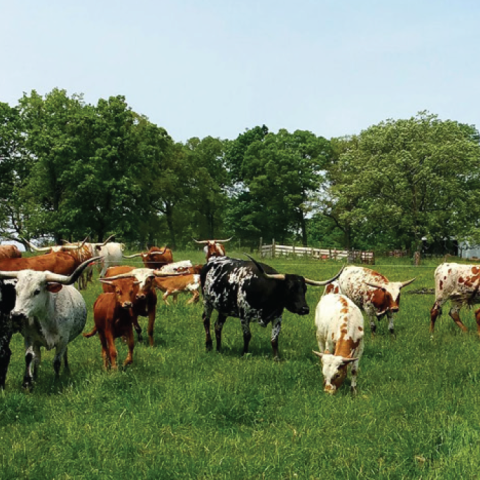
Read ahead to find out more about Larry O'Hern's livestock operation.

Larry O’Hern owns a large cattle operation in Central Illinois. He’s a Midwest cattleman to be sure, but he’s also a successful businessman, managing all aspects of the operation—inputs, accounting, profits, infrastructure, clients, neighbor relations, and oh yeah, all those cows.
Growing and tending 1,500 cows in preparation for profitable sales and slaughter involves many details. But Larry is up to the task. His farm is a family-owned business where all four sons help make it work. One son, Dan, lives on the farm and is responsible for managing day-to-day operations. Patrick, a market analyst, along with brother Matt assists in marketing of the grain and livestock. Tim, an attorney, provides key legal and planning strategies.
The farm has 4,000 acres for pasture and another 1,800 tillable acres currently in corn and soybeans. Either livestock go to Larry’s “Four Aces” confinement barn or they graze lush pastures on the “O’Hern Stock Farm.” In a typical year, the family takes on about 2,000 yearlings that are all fed onsite with forage grown and baled from rotated meadows. Of all the details to manage—feed, production, quality control, and animal health—one of the biggest, most difficult is ensuring water quality protection. What to do with all the manure the cattle produce?
Manure storage and management is a critical aspect of every livestock operation. For years, Larry maintained a Comprehensive Nutrient Management Plan (CNMP) to help him plan how to capture, control, and utilize all the manure his cows generated. He updated and adapted the plan every year until finally Larry decided it was time to try something innovative. He wanted a sustainable, long-term solution.
“I’d always had a good relationship with the NRCS,” Larry said. “We’d installed several different conservation practices on the farm over the years but I was ready to do something with all the manure and nutrients and that’s exactly what we’ve done.”
Larry worked with District Conservationist Greg Jackson from NRCS’ Macomb office and with NRCS engineers. Together with Technical Service Provider Maurer-Stutz, Inc., they designed a system that made sense for the cows, his crops, and his land.
“The answer was a monoslope building,” Jackson said. The structure houses cows and allows for dry stacking of manure at both ends. The facility has a slatted floor over an underground pit located beneath the center of the building. It took a year from start to finish and a price tag of about $1.2 million, but O’Hern can store 1.1 million gallons of manure—what his cows supply in 12-months. They pump manure out and inject it onto cropland with a custom manure applicator. Larry, the family, and all partners are pleased with the results.
NRCS’ Environmental Quality Incentives Program, or EQIP, made the project possible. Larry took advantage of both NRCS’ technical guidance and EQIP’s financial assistance. “It’s a huge structure and a complex design,” says Larry.
He likes having the diversity of both dry-stack and slatted floor options in the structure. The project resulted in a quality structure that provides durability and long-term solutions. Plus, he opted for a rubber-lined slatted barn floor over the pit, which significantly improves cow health and comfort. “I’m producing better quality beef and creating high quality manure at the same time.”
Understandably, Larry’s large operation is watched closely by neighbors, other cattle operations, and the public. The manure storage facility helps Larry manage nutrients better and improves public relations issues. It also lets the O’Hern family feel more confident about all the steps they have taken to address environmental concerns and to help improve the quality of water on their land.

Many Benefits
- Lower feed costs
- Reduced labor and time
- Improved water quality
- Better soil health
- High quality fertilizer
- Increased animal health & comfort
- Better air quality & odor control
When asked if he is satisfied with how EQIP worked and addressed his issues, Larry said yes, he wishes he had pursued the idea a year ago. EQIP definitely met his expectations. And he believes the building will pay for itself in about seven years.
One Step Further
Improving the livestock operation with better manure solutions was key, but so was improving the soil resources on his land. Organic matter levels on Larry’s soils began at 0.5 percent. With soil building strategies now in play, his goal is to increase that to about 3 percent. In the beginning, plans to grow decent pastures or forage on this ground were not feasible; the soils were poor. So poor, in fact that Larry used to haul his cattle to Nebraska to feed at steep prices. Now his cows get all they need right here. High feed prices and transportation costs are gone.
Larry’s row crops, which grow in those dry, poor soils, are doing remarkably well, thanks to regular applications of high quality manure fertilizer. “We’re using everything the cows generate and both corn and soybean yields are up. I wanted to do it right and we’ve done that. It’s the ultimate recycling program. We really created a win-win situation here that no one can argue with. I couldn’t ask for more than that.” Next on Larry and Greg’s ‘To Do List’? Cover crops!
To learn how NRCS and EQIP can help you on your farm, visit the Illinois NRCS Homepage!



